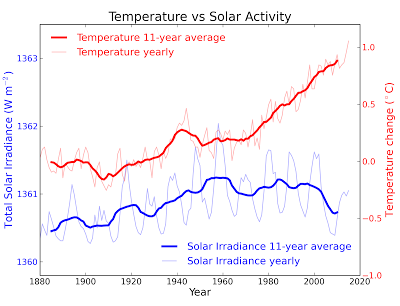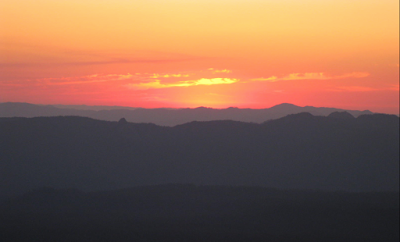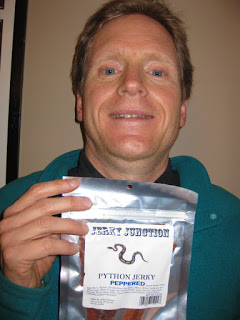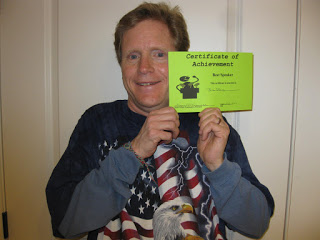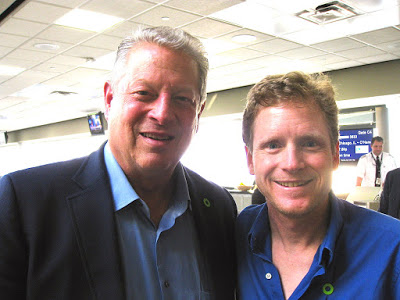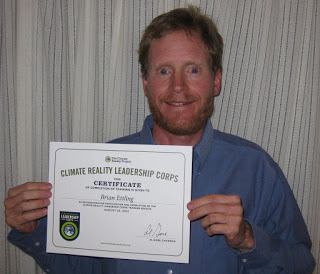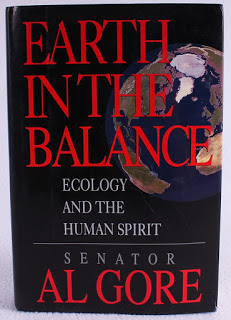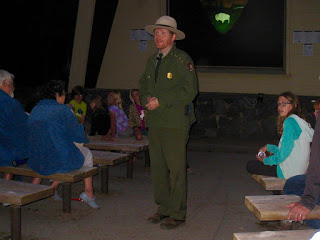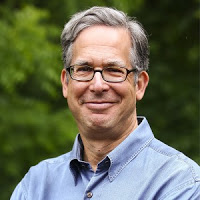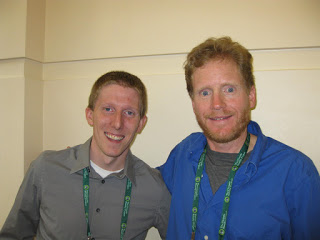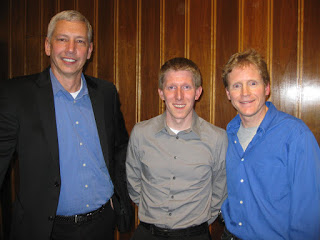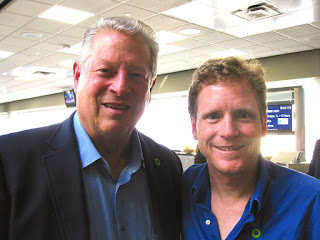Concerned about climate change but unsure how to speak out and engage folks in your community? Then I highly recommend joining a local Toastmasters International group in your community.
What is Toastmasters?
Toastmasters started over 100 years ago by Ralph Smedley, director of education at the YMCA in Bloomington, Illinois. Smedley wanted to help men in his community to learn how to speak, conduct meetings, plan programs and work on committees. He then organized a club where they could learn these skills in a social environment. He named the group the Toastmasters Club. The term “toastmaster” referred to a person who gave toasts at banquets and other occasions.
The first unofficial Toastmasters meeting was held on March 24, 1905. Smedley began working at the newly organized YMCA in Santa Ana, California, in 1922, and the first official Toastmasters meeting was held at that YMCA building on October 22, 1924. Since then,
Toastmasters now boasts having 332,000 memberships in 15,400 clubs in 135 countries to help their members improve their speaking and leadership skills.
If you attend a Toastmasters meeting, many people join saying, ‘My boss highly recommended that I join Toastmasters to improve my public speaking skills’ or ‘I have some big presentations coming up with my company so I really do want to learn how to become a better speaker.’
That was not the case with me. Anyone who knows me well knows that I love being in front of an audience as a park ranger and public speaker. I have led ranger talks in the national parks for almost 20 years, starting in Everglades National Park, Florida in January 1998 and Crater Lake National Park, Oregon in June 2006.
As I blogged previously, I became worried about climate change working as a ranger in Everglades National Park from 1998-2008. By the winter of 2007-08, I became so concerned about climate change that I gave up my winter seasonal job in the Everglades. I still worked my summer ranger job at Crater Lake Nat. Park, but I decided to spend my winters in St. Louis. I was determined speak out and educate folks in my hometown about climate change. However, when I return home for the winters, I was unsure how I was going to speak out on this issue. Thus, I decided to attend meetings and join my local South County Toastmasters Club in January 2011.
My experience joining Toastmasters
When I joined the local Toastmasters Club in January 2011, I stated that I wanted to become a professional climate change public speaker when I filled out my application. When you apply to become a member, you are briefly escorted out of the room by the Sargent in Arms Officer (just his or her club officer title. They are not actually armed). I could hear from the other room some members of the club laughing and snickering when the Club Secretary read my application. They seemed to think it was funny that I wanted to join to gain skills as a climate change public speaker.
I soon learned that many members of that Club are very politically conservative and doubtful of the science of climate change. In some ways, those club members are very reflective of the local community. South St. Louis County is a very white suburban middle class area with community residents that tend to be very conservative.
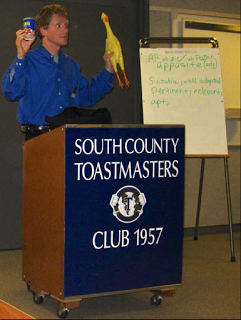 |
| Brian Ettling speaking at South County Toastmasters in 2011. |
Thus, to chat with this group about climate change was going to be a steep uphill climb with this group. I did not care though because I love a good challenge. I was not going to make a difference on climate change if I only spoke with people that agreed with me, “preaching to the choir.” I needed to go to a place where I could actually possibly persuade and help move people in their beliefs on this issue. Thus, Toastmasters was going to be a great place for me to push myself out of my comfort zone.
On the other hand, Toastmasters International and my local club prided themselves on being a supportive and positive safe place for members to improve their public speaking and leadership skills.
The members were all very friendly when I first showed up as a guest to consider joining their club. Therefore, I also knew that my Toastmasters Club would be a supportive space for me to grow as a climate change public speaker.
My Toastmasters Icebreaker Speech
In February 2011, I gave my introductory speech to the club to share who I am. In Toastmasters jargon, they call this speech, “The Icebreaker.” The title of my speech was I’d rather be here than paradise, a small part of the speech is recorded on YouTube. In that speech, I talked about my years as a park ranger in Everglades National Park, Florida. I stated how I had the perfect job and loved it. I got to chat with visitors all day about nature while showing them amazing wildlife such as alligators, crocodiles, dolphins, manatees and various birds. I then gave up that ideal job in warm balmy sunny Florida to be cold and snowy St. Louis because of two words: climate change.
I then told the audience: “In November 2007, while I was still working in the Everglades, I decided to dedicate the rest of my life to the issue of climate change. Now I want to use my skills I gained as a public speaker as a park ranger to humorously educate and inspire people, like you, to take action to resolve climate change.”
I then closed the speech with “Fellow Missourian, Mark Twain once said, “You should live your life so fully, so that when you die even the undertaker will be sad.” For years, I had the dream to be a national park ranger. Now I am taking the courage to follow my dream to humorously educate people about climate change, starting in St. Louis. I appreciate you, fellow toastmasters and honored guests, allowing me to share my dream with you in my icebreaker here tonight.”
After the speech, I decided to hang out with my fellow Toastmasters at a nearby sports pub. I was exhausted from giving the speech, but I was stunned by their reaction. Some of them flat out told me they did not believe in global warming and they seemed offended that I would even mention that in my speech. One fellow Toastmaster, Dee, even confronted me with saying, “How do you really know that climate change is real?”
I was totally caught off guard by their negative reaction, but I was not going to let that stop me. Dee actually gave me the idea for my second toastmasters speech. I was going to give a responding speech of how I exactly know how climate change is real. Looks like some of the members of the group really wanted to challenge me on the science of climate change.
Dee asked me a great question: ‘How do I know for sure?’ I felt up for the challenge. Dee gave me all the motivation I needed to start working on my second speech.
My beginning failure and success giving climate change speeches to my Toastmasters group.
For my second speech in April 2011, I went straight at Dee’s question with my speech called, I am going to drop a Stinkbomb on you. I was quite nervous giving that speech. Even more, I had trouble with the slides advancing with using the club’s remote control. I also turned my back to the audience several times to look to see what was on the screen.
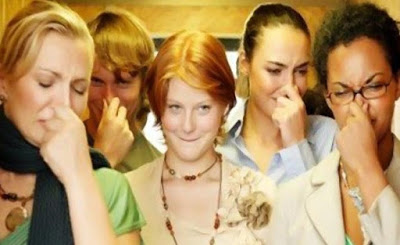 |
| Image Source:www.healthambition.com |
I did get helpful advice from my speech evaluator, Tom Terrific, to buy my own remote. He also suggested that I place my laptop in a way that I could use it as a teleprompter so I did not look have to turn to look at the screen so much. That was great advice on public speaking that I use to this day. I soon bought my own remote control that I love using and I do like using my laptop as a teleprompter for some of my climate talks.
Because of my struggles delivering this speech the club members did not vote for me for best speaker for this speech. However, they did vote for me as the Most Improved speaker as encouragement.
Since the stinkbomb speech as so serious and technical about climate change, I decided to go lighter for my next speech in May 2011. It was called “Time to Say Goodbye.” This speech was about saying goodbye to my temporary job at the St. Louis Science Center working at their temporary climate change exhibit, saying goodbye to my fellow Toastmasters as I was leaving St. Louis to return my summer seasonal ranger job at Crater Lake National Park, and my dream of saying goodbye to my ranger job so I could work full time on climate change communications and organizing.
This speech was very successful with the club members. They voted for me as “Best Speaker” and “Most Improved Speaker” at this toastmaster’s meeting. This felt like a big victory for me. It proved that I could giving a winning speech to a conservative group while mentioning my conviction that climate change is real and I must take action.
Successfully convincing my fellow Toastmasters that it is ‘Easy to be Green.’
After my second speech, a Toastmasters friend, Nilsa, informed me that my next speech had to be “more uplifting with solutions to climate change. You scared the hell out of us that WE ARE STINKING UP THE PLANET with your last speech.”
Thus, my next Toastmasters speech that I gave in November 2011 was my sequel or flip side to the Stinkbomb speech. It is much more upbeat and light. It was called It is Easy and Fun to Be Green. I am aiming for the undecided and deniers of climate change in my audience. I spoke to them in a language they understand: CASH! and not even mentioning the sensitive word of climate change.
With the help of Kermit the Frog from the Muppets, I talked about how ‘Green is Green: it saves you money to go (environmentally) green. I showed about how weatherizing your home can save lots of money. I spoke to my audience in a way they could relate resolving climate change. I sold them on how reducing your carbon footprint (without using that term) can save you cash (not to mention saving the planet).
As you can see from the YouTube video of the speech, the speech went fabulous. I had fun delivering the speech and the audience enjoyed listening to it. The other Toastmaster members voted me as the “Best Speaker” for the evening.
The oldest member of the club, Howard, who is a hardcore conservative and climate change contrarian, stopped me with a big smile afterwards. He is known in the for being very tight with money. Howard said, “Brian, I still don’t believe in global warming, but I loved your message about saving money tonight. As everyone knows, I am all in favor of that!”
That felt like like a big success to me that I had found a successful message on climate change that reached contrarians that did not offend them. On the contrary, they really seemed to like that message.
I learned a big lesson that night: if we could help persuade people to reduce their carbon footprint even if they still outright rejected the science of climate change, that is good enough for me. The planet wins and they win by saving money, even if they still hated the concept of global warming.
 |
| Brian Ettling winning his 4th Toastmasters speech, with the help of Kermit the Frog |
I was now on a roll winning two speeches in a roll. I thought was was getting this Toastmasters thing down pat. However my next two speeches proved harder to dazzle the audience.
Debunking this contrarian myth: Scientists are still in disagreement about climate change
My fifth speech in January 2012 was EXPAND YOUR PATRIOTISM. From my experience of working in nature and my passion about climate change, I wanted to inspire my fellow Toastmasters to think different about the world that surrounds them. So many of my fellow Toastmasters are so deeply patriotic for America. I hoped to broaden their thinking to be more patriotic for the planet. This speech did not move them very much and I was not voted as the Best Speaker.
My sixth speech in March 2012 was The Silence that Speaks to Us. I still am very proud of this speech. I am happy that I was able to record it for YouTube. My focus was inspire my fellow Toastmasters to reconnect with nature and the outdoors. With my passion for climate change, my deeper hope that maybe they would want to protect nature, the environment, and eventually our planet if they did spend enough time in nature.
The audience did not seem persuaded by this speech, so I did not win for this speech. I had now struck out twice in a row. I wondered where my magic touch was and I wanted to win another to get it back.
For my seventh speech in May 2012, The Debate is Over, I was determined to win for more than one reason. I was tired of my losing streak. More importantly though, I was tired of hearing this myth from my fellow Toastmasters: ‘Scientists still disagree that humans are causing climate change.’
I was determined to blow that myth out of the water with that speech. I put together the best powerpoint images I could find. I practiced this speech over and over with family. I practiced this speech with my mentor, Rob. He was very cautious about accepting human caused climate change. At the same time though, he was very supportive of my purpose with the Toastmasters group to improve as a climate change public speaker. He challenged me to do a 5 minute question and answer period with the audience. He felt like many folks in the group would want to respond with questions to challenge my assertion and I should give them an opportunity to do that.
As you can see from the above YouTube video, the sparks really did fly during the question and answer period. My fellow Toastmaster and friend, Adam, did not like my fact that 97% climate scientists accept human cause climate change. He countered that there are meteorologists and paleontologists who still disagree with human caused climate change. I then responded with a theoretical example within the Toastmasters culture to relate of how scientists have this strong scientific agreement on climate change.
That YouTube video shows that the question and answer did become quite contentious between Adam and me. After all that tension, Adam and the other Toastmasters did vote for me as the Best Speaker that night. This was even a bigger victory for me than the first two wins. It showed I could respond to dismissive questions on the spot and still win. It was even more wonderful to take away one of their favorite arguments that they were using against me at the meetings that scientists still in disagreement about climate change.
Debunking this contrarian myth: Scientists in the 1970s were predicting global cooling
My eighth speech was in January 2013, You Can See Clearly Now. For this speech, I wanted to debunk this myth I had heard from some of my fellow Toastmasters: ‘It is snowing or cold today, therefore global warming cannot be real.’ In the speech, I explained the difference between weather and climate. I then showed how climate change is loading the dice for warmer and more extreme weather, while showing there would still be some cold and snowy days.
I did not win Best Speaker for this speech. However, it still felt like a victory. I took away another weapon or myth the contrarians were using against me that cold and snowy weather disproves climate change.
For my ninth speech in April 2013, What Keeps Me Up Late at Night, I wanted to address the addiction to coal energy in the St. Louis area causing climate change. St. Louis currently gets up to 84% of its electric energy from coal. That is over twice the national average of utility energy produced by coal. As a result of this dirty energy, St. Louis has twice the national average of asthma for children, the poor, minorities, and seniors. Because of the dirty air, I was concerned about the health impacts on my family, especially my dad.
I did not win Best Speaker for this speech. It pleased me though that some of the members of the audience wanted to fill out the green cards I mentioned during the speech. Those cards were drafted by the Missouri Sierra Club. They were addressed to the St. Louis County Council. They asked the St. Louis County Council to request the Missouri Department of Natural Resources (DNR) to require Ameren, the local electric utility which operates the nearly Meramec Coal Plant, to lower its sulfur dioxide emissions to levels that are safe for our families according to the Clean Air Act.
April 2014, I gave my tenth Toastmasters speech: Growing Up in the 1970s: climate change and me!
In this speech, I wanted to debunk this myth I had heard from years from some of my fellow Toastmasters: ‘In the 1970S climate scientists believed an ice age was coming!’ I wore a disco outfit to reminisce about the fun aspects of the 1970s. At the same time, I showed evidence that there was no scientific agreement in 1970s about a looming evidence. It was actually a minority of scientific papers.
As you can see from the above YouTube video the audience had a lot of fun hearing this speech and I had so much fun giving this speech. I was voted Best Speaker for this speech. Even more, it was fabulous to away another of their favorite argument myths that they were using against me at the meetings that scientists in the 1970s were proclaiming global cooling, not global warming.
This speech was an even bigger victory for me because I had completed my 10th speech in the Toastmasters Competent Communicator Manual. This now meant I qualified to be a Toastmasters Competent Communicator. A big achievement for a Toastmaster. (see picture at beginning of blog)
Debunking this contrarian myth: Earth has not warmed since 1998.
While I was relishing the victory of winning my 10th speech and becoming a Toastmasters Competent Communicator, I was cornered at the next meeting by Steve. He is one of the more hardcore contrarians in that Toastmasters Club.
At first he seemed a little shaken that I had debunked one of his favorite cherished myths. He looked like a kid that their parents had just taken away their security blanket. He said, “Brian, Wow! I had not heard before that there were so many scientists that accepted global warming in the 1970s.”
However, since I had blown apart one of his favorite myths, Steve instinctively felt like he had to hit me with another jab: “You know Brian that the Earth has not warmed up since 1998.”
I responded: “Steve, 2013, 2010, 2009 and 2005 were all hotter years than 1998. This decade so far and the 2000s where all hotter decades than the 1990s. Even more, most of the heat each year from burning fossils fuels ends up in the oceans. Therefore, you cannot say ‘The Earth has not warmed up since 1998.'”
 |
| Image Source: climatecentral.org |
Steve was stunned that I answered him back so fast. He was used to stumping people when he mentioned this. His face seemed in disbelief that I had such a quick response. He then sheepishly uttered, “Well, you have your sources. I have mine.’
It was then that the light bulb went off and Steve had just given me the idea for my next speech. It was time to slay the often heard myth that ‘Earth has not warmed since 1998.’
I had the perfect source to do this. Dr. J. Marshall Shepherd, a top U.S. climate scientist, had this talk on TEDx called, Slaying the “zombies” of climate science. Dr. Shepherd is a professor in the Department of Geography at the University of Georgia and director of the University’s Atmospheric Sciences Program. As the 2013 president of the American Meteorological Society, Shepherd is a leading international expert in weather, climate and atmospheric sciences.
In this video, Dr. Shepherd knocks down the “zombie theories” that hinder our discussions about climate change. He defines zombie theories as: “One of those theories that scientists have refuted or disproven time and time again, but they live on like zombies in the blogs and on the radio stations.”
I was able to track down Dr. Shepherd through a mutual friend and he generously gave me his slide deck from that presentation. Armed with his images and my own information that I had gathered, I put together my own speech for my Toastmasters group in November 2014, Slaying a Zombie Theory: ‘Earth has not warmed since 1998.‘
For this speech, I practiced it often for friends, including my fellow Toastmaster Adam, who is very critical of climate science. He advised me to play up even more the zombie theme. My zombie theme may have been too strong because some of my fellow Toastmasters felt like they were being accused of being zombies. That was not my intention. It was the discredited myths that too many people still believe were the zombies, not them. However, they did not see it that way. I was not voted as the best speaker for this speech.
From this YouTube video, you will see that I had a five minute question and answer period. I was caught off guard by a question from fellow Toastmaster Ginny. She asked about Mars also warming about the same rate as the Earth. I answered it the best I could on the spot. That is the thrill and frightening thing about a question and answer period. You never know what an audience is going to ask you, especially if they decide to play ‘let’s stump the speaker.’
The gift that I do love about question and answer periods is that it sparks me to do my own internet research. It gives me a great opportunity to have an answer ready next time that question is asked. I went to three credible sources afterwards, SkepticalScience, NASA and National Geographic to answer Ginny’s question in an e-mail. The conclusion of these articles indicated to me that evidence of Mars warming seems to be weak and not very well established.
In an e-mail to Ginny afterwards, I wrote that after reading my three sources, I concluded that “any warming on Mars is from an internal influence. It looks like the change in albedo (reflectivity of light primarily from ice, snow or clouds) was probably caused by a shift in the wobble of Mars’ rotation (this same shift triggers glacial and interglacial ages on Earth). It is not the sun or any external influence because solar irradiance (the output of light energy from the entire disk of the Sun, measured at the Earth) has decreased on Earth during the past 35 years. Therefore, any warming on Mars, would purely be coincidental and not related to current warming on Earth or other planets in our solar system.”
The second question I got from Ginny was “Why was last winter so freaking cold?” I was prepared in answering that question. I acknowledge that St. Louis had some record cold temperatures in the winter of 2012-13. However, much of the world had temperatures that winter that were well above their average, such as Siberia, China, Europe, Africa and Australia. I tried to explain to the audience that you have to look at climate change as global and long term, not just short term and in your neighborhood.
I ended my question and answer period with this analogy, “To look out your window and say ‘Man its snowing. Therefore climate change is not real’ is kind of like looking out at the horizon and saying ‘I can see the horizon. Therefore the earth is flat.'”
Oddly, my speech evaluator and other Toastmasters still thought I cheery picked and did not adequately answered the question. Thus, I did not seem to win over the audience with this speech. However, I still felt like I took away another one of their cherished myths that ‘the Earth has not warmed since 1998.’ Another argument they have not hit me with since then.
On a lighter note: Trying to sell Everglades Python Jerky to my fellow Toastmasters
Since my zombie speech seemed to trigger some strong negative reactions from some of the other Toastmasters, I decided to create a much lighter and more humorous speech for my 12th speech in January 2015. This speech project in the Toastmasters manual was called, The Effective Salesperson.
The objective of this speech was to learn a technique for selling an inexpensive product in a retail store and try to persuade the customer to buy that product.
In November 2014, a good friend and co-worker from Crater Lake, Dave Grimes, gave me Everglades python jerky as a gag gift. I had worked 16 years in the Florida Everglades. While working there, it was sad to witness introduced Burmese pythons out competing the native alligators. Even more, the pythons were eating endangered birds and wiping out other native animals, such as raccoons, rabbits, bobcats, and deer.
For fun, in this speech, I would try to persuade my fellow Toastmaster, Susan, try a sample and buy Everglades python jerky. I did not win Best Speaker for this speech. It probably because I was not able to successfully convince Susan to try or buy the python jerky. I did not bother me that I did not win. As you will see from this YouTube video, I had so much fun giving this speech and the audience really witnessing it.
It was fun to present a lighter and more humorous side of me to my fellow Toastmasters after my heavy hitting previous speech on climate change. Some of my fellow Toastmasters and I still laugh about that speech to this day, so it still seemed like a big success to me.
Successfully selling to my fellow conservative Toastmasters a revenue neutral carbon tax
After the python jerky speech, I next tried to sell my conservative Toastmaster friends on a carbon tax. After the Zombies Toastmasters climate change speech, a fellow Toasmaster, Jerry, told me that he felt helpless and unsure about climate change. He wanted to know “What can I do?”
He requested that I give a future speech with solutions that could relate to him. Thus, the speech I gave for Jerry and other concerned Toastmasters in the room was an upbeat speech called The Conservative Case for a Carbon Tax
In this speech, I made my case that a revenue neutral carbon fee and dividend, as proposed by Citizens’ Climate Lobby, is the best conservative, market-based approach to reduce the threat of climate change.
This speech did connect with the conservative Toastmasters audience because they did vote for me as the Best Speaker for this speech.
Successfully reaching my doubtful Toastmaster friend Adam on one aspect of climate change.
After the carbon tax speech, I wanted to address a question that my friend Adam, who is very doubtful of human caused climate change, posed to me. He wanted me to answer this question in a Toastmasters speech: “How can climate scientists possibly know what is going to happen in the future?”
I thought that was a very fair and good question that I should address during the speech. Like all great questions, it forced me to answer that question for myself: How can anyone, especially climate scientists, possibly know what is going to happen in the future? All of us can think of times in the past when humans were wrong.
Since Adam and I had heated disagreements about climate change in the past, I was determined to get him on my side for this speech. Thus, I met with him at coffee shop to show him the powerpoint and the draft of this speech. Adam had a lot of great suggestions for me for this speech to help reach him and other conservative Toastmasters.
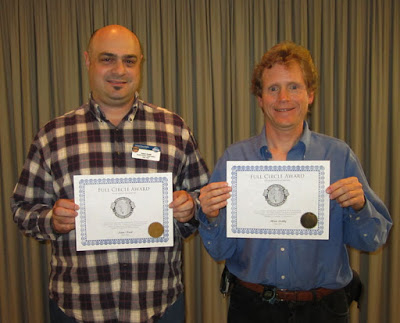 |
| Toastmasters Adam Kutell and Brian Ettling Image Source: southcountytoastmasters.wordpress.com |
This speech also called for a question and answer period. When I was practicing my speech with Adam, I remarked: “Someone is probably going to say to me: ‘How you say that climate change is real when it was cold in St. Louis recently?'”
Adam responded: “You don’t have to worry about this because you already explained to us (in a previous speech) that weather is a snapshot, climate is a movie.”
Wow! I was stunned by Adam’s statement because it looked I had helped move him a little in my climate change speeches. This felt like a huge accomplishment for me. Here was Adam who is still very dismissive of human caused climate change on many levels showing me that I had reached him in one of my speeches.
 |
| Dr. Martin Luther King, Jr. Image Source. biography.com |
Martin Luther King, Jr. once said, “Here is the true meaning and value of compassion and nonviolence, when it helps us to see the enemy’s point of view, to hear his questions, to know his assessment of ourselves. For from his view we may indeed see the basic weaknesses of our own condition, and if we are mature, we may learn and grow and profit from the wisdom of the brothers who are called the opposition.”
On most political issues, Adam and I still don’t agree. However, I have come to see him as a friend and ally in the Toastmasters group. When others members have verbally attacked me for my passion on climate change, Adam has come to my defense.
That is the great thing about Toastmasters that I recommend other climate change advocates join. It is a community support group to help people improve their public speaking and leadership skills. Thus, some members may get personally offended if someone joins looking to improve their skills and confidence as a climate change advocate or a progressive organizer. However, the group as a whole will be very supportive. Even more, you will even get conservatives who will rush to your defense to support your goals in Toastmasters, even if they are completely opposed to your politics.
This is how we make progress on issues of climate change and other social justice or political issues. We engage our community members. Some will despise our message, other unlikely allies will rise to our defense. This is heavy lifting. It is not easy. It is not for everyone, but this is how we progress on issues that we can are about, such as equality, reducing violence, reducing pollution, etc. We won’t solve these problems by just staying home or Facebooking those who just agree with us. We engage our opposition.
After seeking Adam’s advice and input, I gave this speech to my Toastmasters Club in March 2015. The speech was called, Addressing the Opposition: “How can climate scientists predict the future?” Adam was in the audience and I let Adam ask the first question. Unlike previous question and answer sessions after one my speeches, Adam was not hostile this time. He helped me craft it. How could he be hostile to something he helped create?
Even more, I asked Adam to keep his questions short and he totally kept his word on this. He had a short question, instead of a long laundry list why I am wrong and he is correct.
Adam asked the question: “My concern is that all of us know the difference between a chiropractor and a medical doctor in that lot of us don’t trust chiropractors and we think of them as quacks. They are less than a mature practice like medical doctors. And I would say the same thing about climatologists versus meteorologists. Why would we trust climatologists when a more mature science like meteorology when there is a lot less of a belief that climate change is human caused in the meteorology world?”
I thought this was an excellent question by Adam because much of the general public is confused about the difference of climatology versus meteorology. Thus, I answered Adam’s question by trying to walk through the history of climate science starting with Joseph Fourier in 1824 discovering the greenhouse effect, John Tyndall in 1859 discovering H2O and CO2 absorb infrared which confirmed Fourier’s greenhouse effect and Svante Arrhenius proposing in 1896 that human CO2 emissions would prevent earth from entering next ice age. My argument was the the science of climatology was just as old as the science of climatology.
Adam actually seemed happy with my answer and he had no other questions for me. One other Toastmaster, Jason, had a question about volcanoes contributing to climate change. I thought it was an easy question to answer. This was by far the easiest question and answer period I had faced with my Toastmasters. They really seemed to like this speech. They voted for me as Best Speaker for this speech.
This speech felt like a big victory to get my friend and climate doubter, on my side for this speech.
Responding to other climate change contrarian myths from some of my fellow Toastmasters
Since that Addressing the Opposition speech in March 2015, I have given three more Toastmaster speeches trying to respond to arguments from dismissive and doubtful Toastmasters in my club why they cannot accept climate change.
1. For over a year, my Toastmaster friend Jim was asking me: ‘What can I do to get you to ‘see the light’ to change your mind about climate change?’
In March 2016, I gave this speech, My Winning proposal for you (for climate contrarians looking to change my mind), for Jim and other Toastmasters who kept asking me that question.
Even if I did not win Best Speaker on that night, I was still very proud of this speech. I laid out the case how I had seen climate change as a park ranger working in Everglades National Park. I showed the evidence of sea level rise, increased carbon dioxide in the air supply and more extreme weather events impacting our St. Louis area. I then challenged the audience to meet with climate scientists to try to convince them they are wrong about climate change.
When they start changing scientific minds, then I will change my mind. It was great to deflate another contrarian argument about the high standard they will have to cross to change my mind about climate change.
2. In April 2016, I gave a press conference speech, where the audience could ask me questions. For this speech, I wanted to address this argument: ‘I don’t see this dysfunctional and partisan Congress ever taking bipartisan action to address climate change.’
The title of my speech was Climate change action is slowly building movement in Congress.
I pretended to be a spokesperson for Citizens’ Climate Lobby holding a press conference after the bad news that the Supreme Court put a stay on President Obama’s EPA Clean Power Plan. I highlighted that Citizens’ Climate Lobby’s carbon fee and dividend is the best path forward for Congress. Even more, there is movement among Republicans in Congress, specifically the Gibson Resolution and the House Climate Solutions Caucus, to start addressing solutions to climate change. I then took questions from the audience for 5 minutes.
My Toastmaster friend Erin asked me this question during the question answer session: “How do you forsee the dividend program continuing when the projection is that fossil fuel usage will decrease? As a result one could see that there would be less money to return to households and eventually it would not be able to sustain the increased costs of fuels.”
Fellow Toastmaster Jim then asked me: “I understand you clearly said that this is a market driven solution and not government regulations. My interpretation is that it is not market based. It is not the free enterprise. Corporations are not going to freely volunteer do this. It will only happen with major rigid government controls. Can you please explain that?”
These were both excellent and challenging questions that I really had to think on my feet to answer. I gave detailed answers of my actual answer and the response I would have liked to have given in this previous blog.
I did not win for this speech. Most likely, it was because I struggled answering Erin’s question. However, I love and fear the high wire act of answering questions about climate change on the spot.
3. My most recent speech was in April 2016. In this speech, I really wanted debunk this argument I had heard over the years from some of my fellow Toastmasters: “We should not take any action on climate change until China cleans up its pollution.”
In this speech, I really tried to appeal to the audience’s sense of patriotism, American exceptionalism and competition. I called this speech Hey U.S.A! Let’s win the Clean Energy Race!
During this speech, I showed that China is investing a lot more money in renewal energy. I did acknowledge the elephant in the room that China has a serious problem with pollution. However, the evidence coming out of China is that they are starting to take steps to address it, such a early signs that they are starting to reduce their coal use.
I then warned my audience that with all of the Chinese investments in renewable energy, the U.S. runs the risk of really falling behind China in the race for renewable energy. I then ended the speech by repeating the title: Hey U.S.A! Let’s win the Clean Energy Race!
I am still really proud of this speech. I was able to deflate another climate argument. Best of all, this speech did seem to really connect with the audience. My fellow Toastmasters voted for me as the Best Speaker for this speech.
The climate change questions my Toastmasters Club has helped me learn to answer
As a climate change communicator and public speaker, my involvement in South County Toastmasters has been a huge benefit for me. The conservative members with their very tough, challenging, and pointed questions has enable me to discover answers to these questions:
1. How do we really know that humans are currently causing climate change?
2. What can I personally do to reduce the impact of climate change?
3. Don’t scientists still disagree that humans are causing climate change?
4. If it is snowing or cold outside, how can global warming cannot be real?
5. Do you realize that the Earth has not warmed up since 1998?
6. Isn’t planet Mars warming at the same rate as the Earth?
7. Is there any hope than Congress and/or me can reduce the threat of climate change?
8. How can climate scientists possibly know what is going to happen in the future?
9. What can I do to get you to ‘see the light’ to change your mind about climate change?
10. Why should we take any action on climate change when China pollutes so heavily?
11. Don’t volcanoes give off more carbon emissions than humans?
The final question I have not yet addressed in a Toastmasters speech. However, I heard that statement frequently enough that I got to ask that question to Al Gore directly when I met in in Cedar Rapids, Iowa in May 2013. In e-mails and on social media, I did share Al Gore’s response to my Toastmaster friends.
Final Thoughts
Since becoming a Toastmaster in January 2011, I have given 19 speeches. I am now one speech away from achieving the Toastmaster level of Advanced Communicator Bronze. I have have the thrill of winning Best Speaker 7 times and winning Most Improved twice. On the lighter side, I have also entertained my fellow Toastmasters by being The Jokemaster on more than one occasion.
It has been an amazing adventure so being a Toastmaster so far, but I don’t plan on giving it up anytime soon.
Along this journey, I want to thank my fellow Toastmasters who have been so kind and helpful to me, even with their very challenging questions at times:
My mentor Rob Van Winkle, Tom Terrific, Adam Kutell, Erin Gissell, Susan McConnell, Nilsa Scott, Dee McAliney, Steve Winheim, Jerry Paul, my mentee Rich Puskarich, Kathy Denton, Steve Flick, Dave Domian, Brent Stewart, Ginny Foster, Adam Jackson, Dean Boone, Jack Bettag, Judy Sowers, Howard Brandt, Carl Hendrickson, Jason Murphey, Alan Kirby, and many others.



